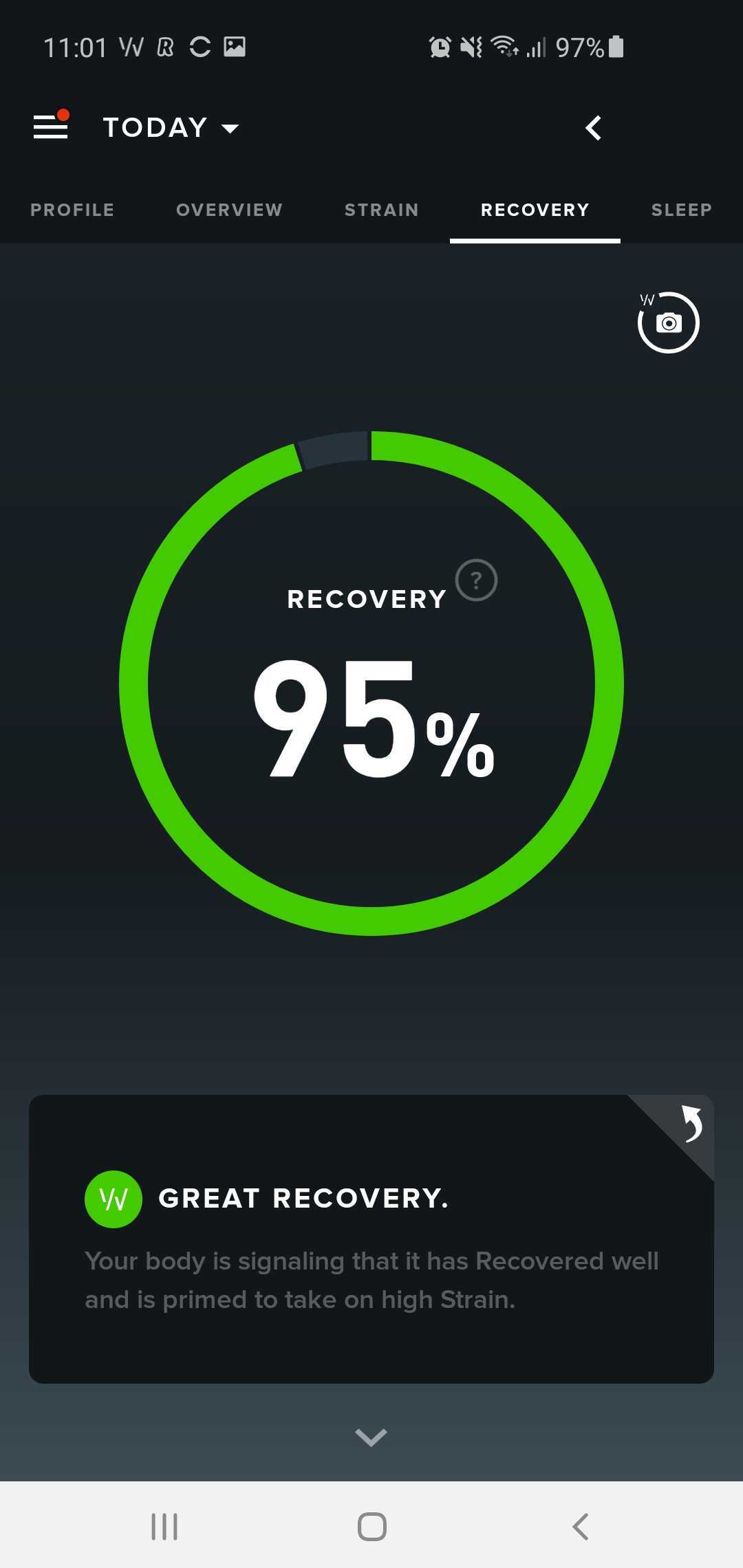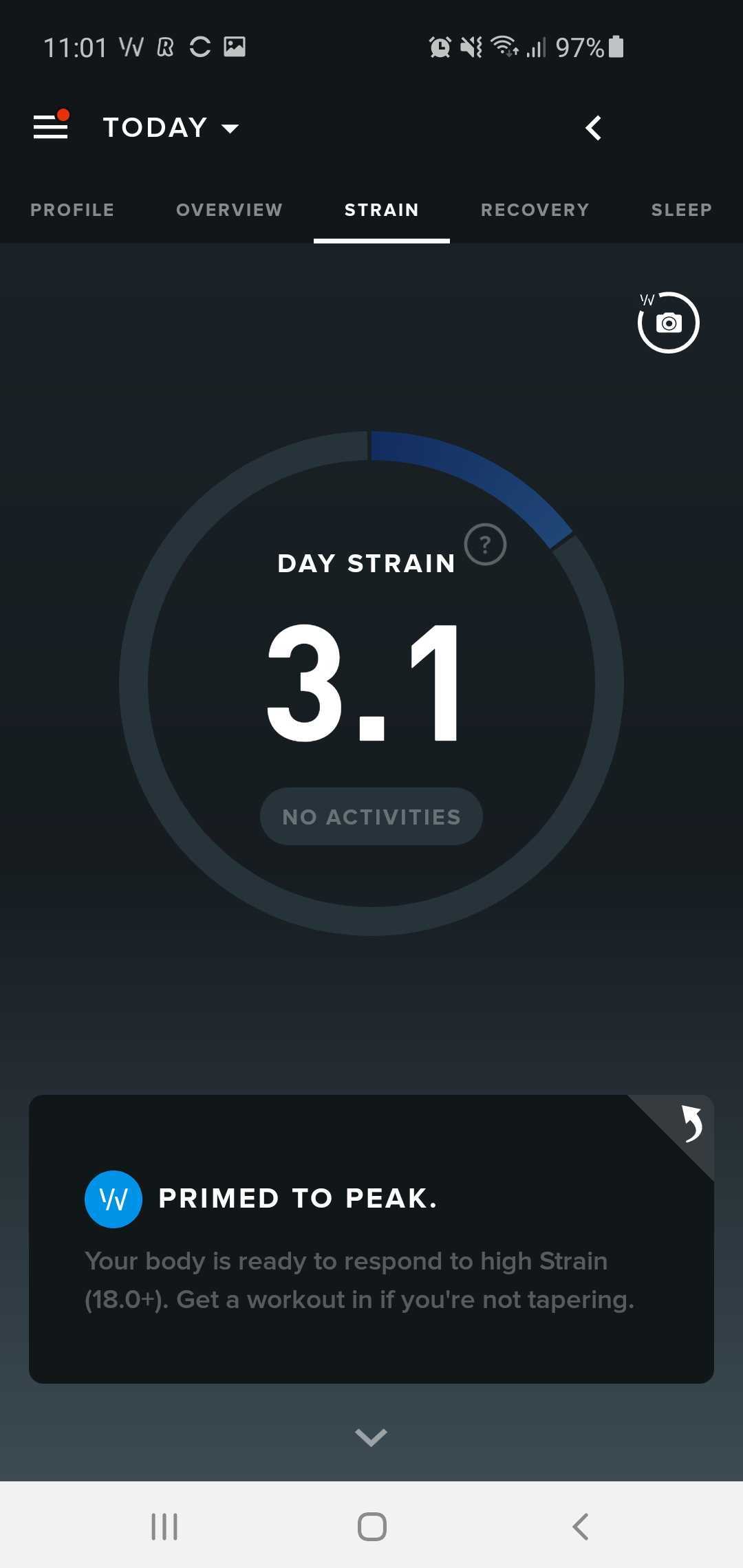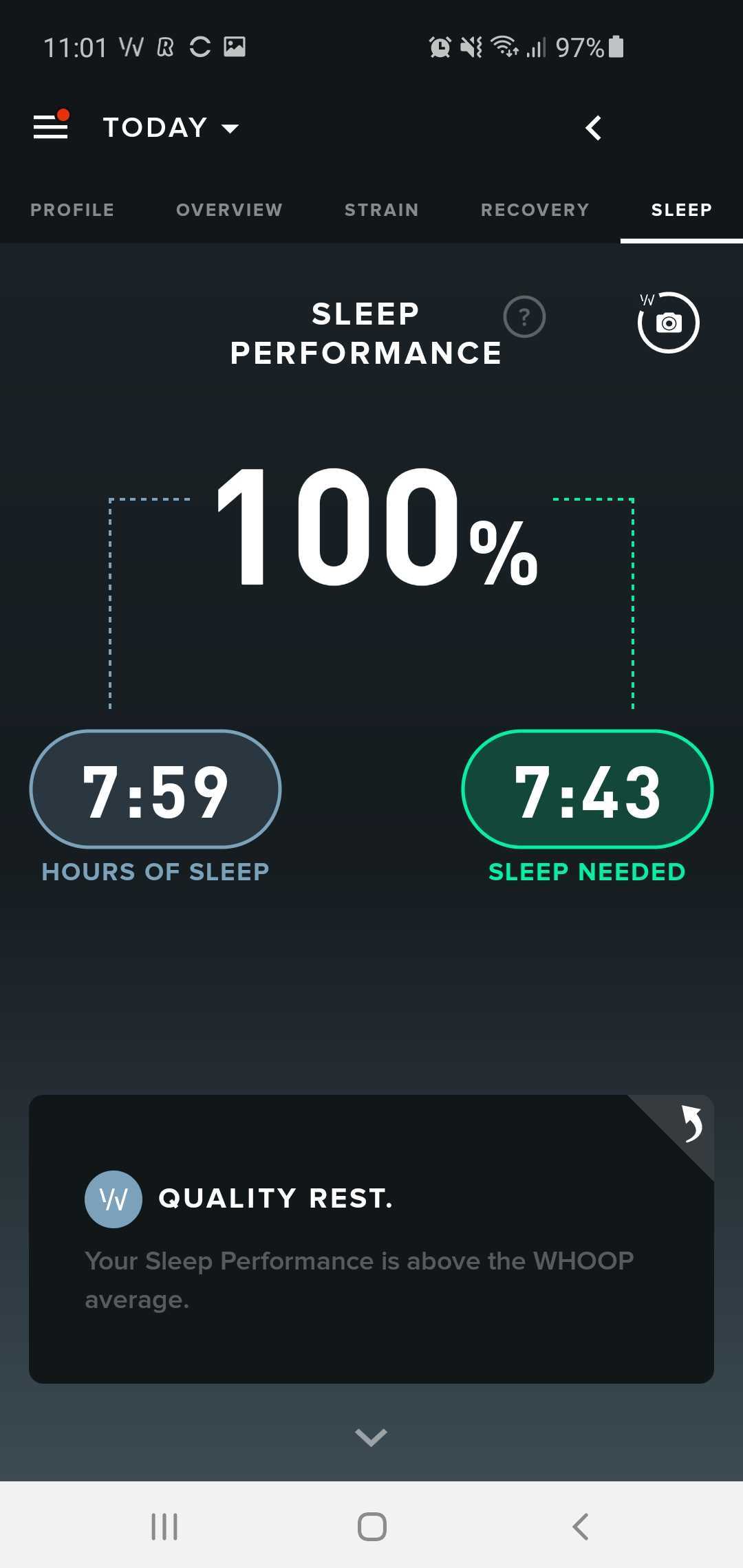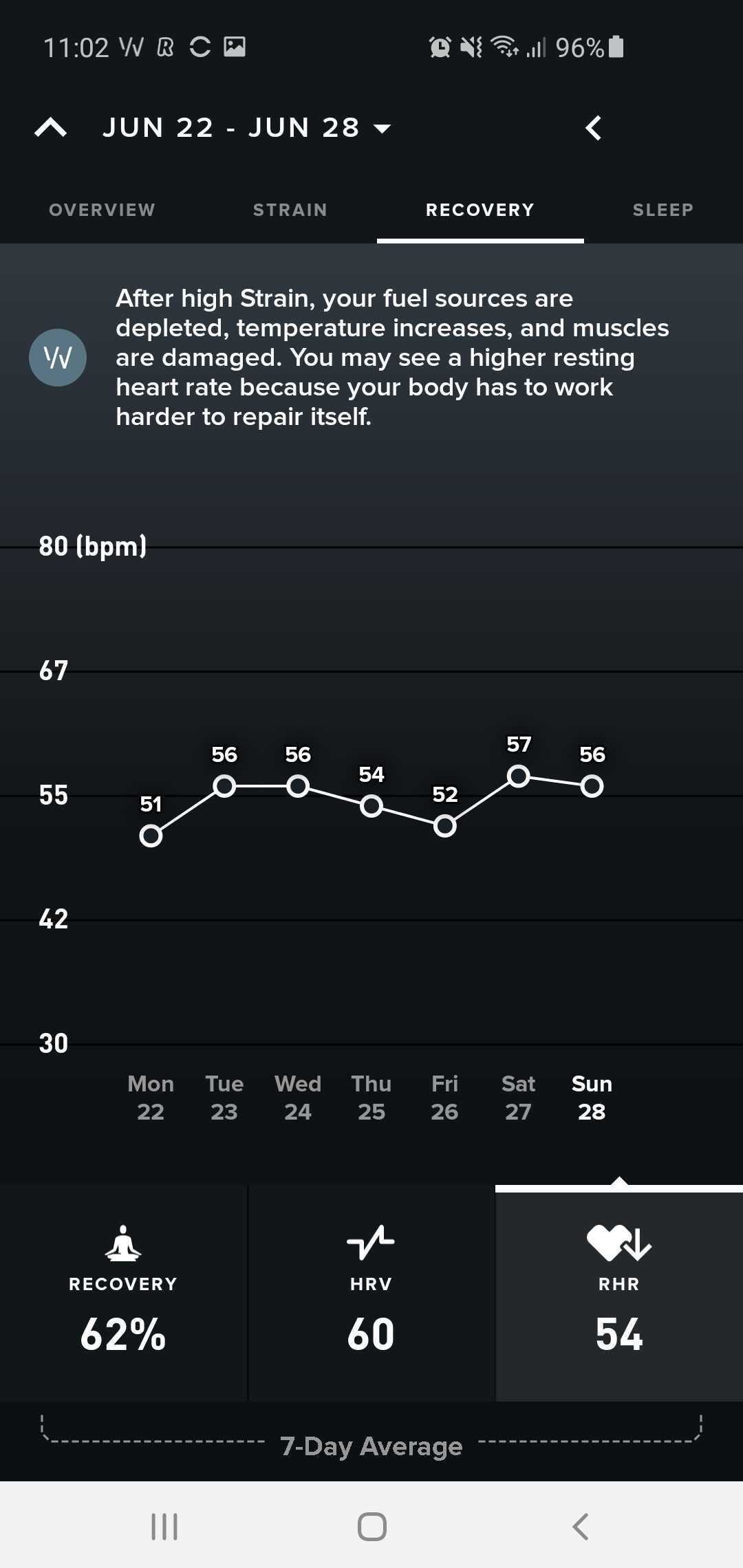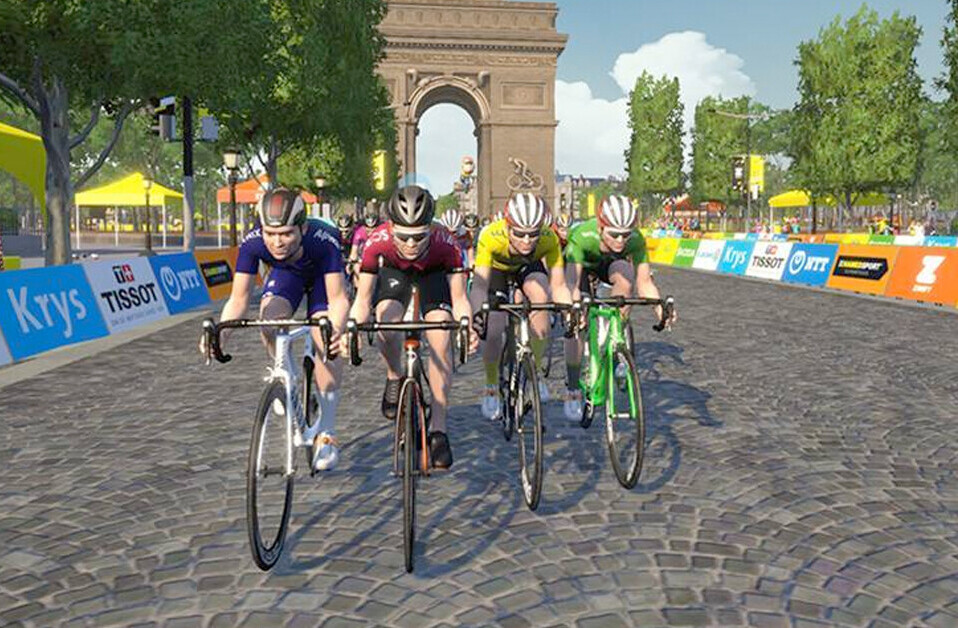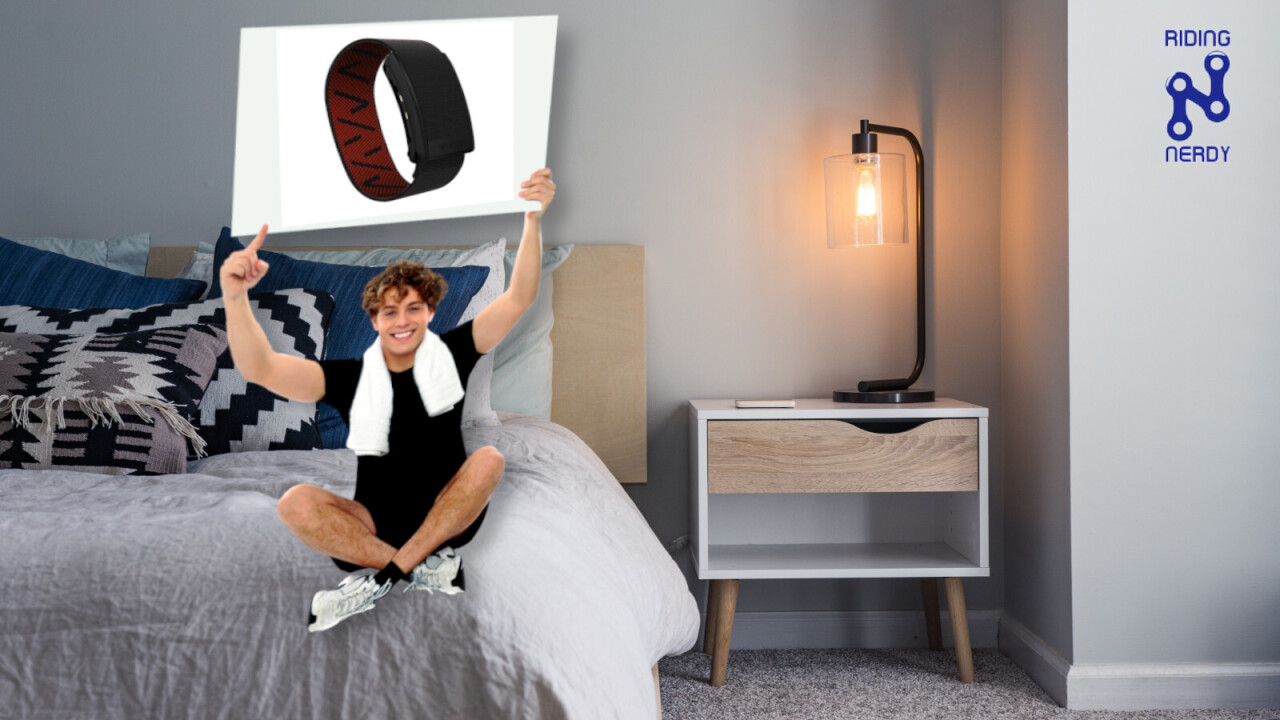
Welcome to Riding Nerdy, TNW’s fortnightly dive into bicycle-based tech, where we go into too much detail and geek out on all things related to pedal-powered gadgets.
With all the cycling tech on the market — like power meters, heart rate monitors, Zwift, smart trainers — it’s easy to think that you just need to ride more and ride harder to get fitter. But that’s not necessarily the best approach. With all this tech we should actually be training, and recovering, smarter.
I say recovering, because that’s specifically what the latest tech I’ve been using for the past few months — the WHOOP band — does. In short, it’s subtly augmented the way I approach rest and recovery after exercise, and made me appreciate sleep way more than I did previously.
It’s helped me recover so well, in fact, that during the first full month of using it, I did more cycling (in terms of time) than I’ve ever done in my life. I managed to squeeze out some 52 hours of two-wheeled fun in May, normally I’d do about 30 to 35 hours per month. Off to a good start, I’d say.
But before getting all nerdy, let’s start by looking at what Whoop actually is, and what you get in the box.

There are two components to the “Whoop” experience, the wristband and the app.
The wristband is a pretty simple affair. It’s a fabric strap that contours securely to your wrist. It has a waterproof housing that contains sensors that measure five key performance metrics based on heart rate and skin conductivity. The wristband is also Bluetooth-enabled, which lets it broadcast this data wirelessly to other fitness devices. I actually paired it with my MacBook to use in Zwift and it worked flawlessly.
Compared to other sleep trackers and fitness watches, it’s a delightfully lightweight, subtle, and stylish alternative. Sleeping in this thing has been no problem at all as it’s also incredibly comfortable. Which is also good, given that you’re supposed to wear the strap 24/7.
In fact, Whoop’s secret is to gather tonnes of data around the clock.
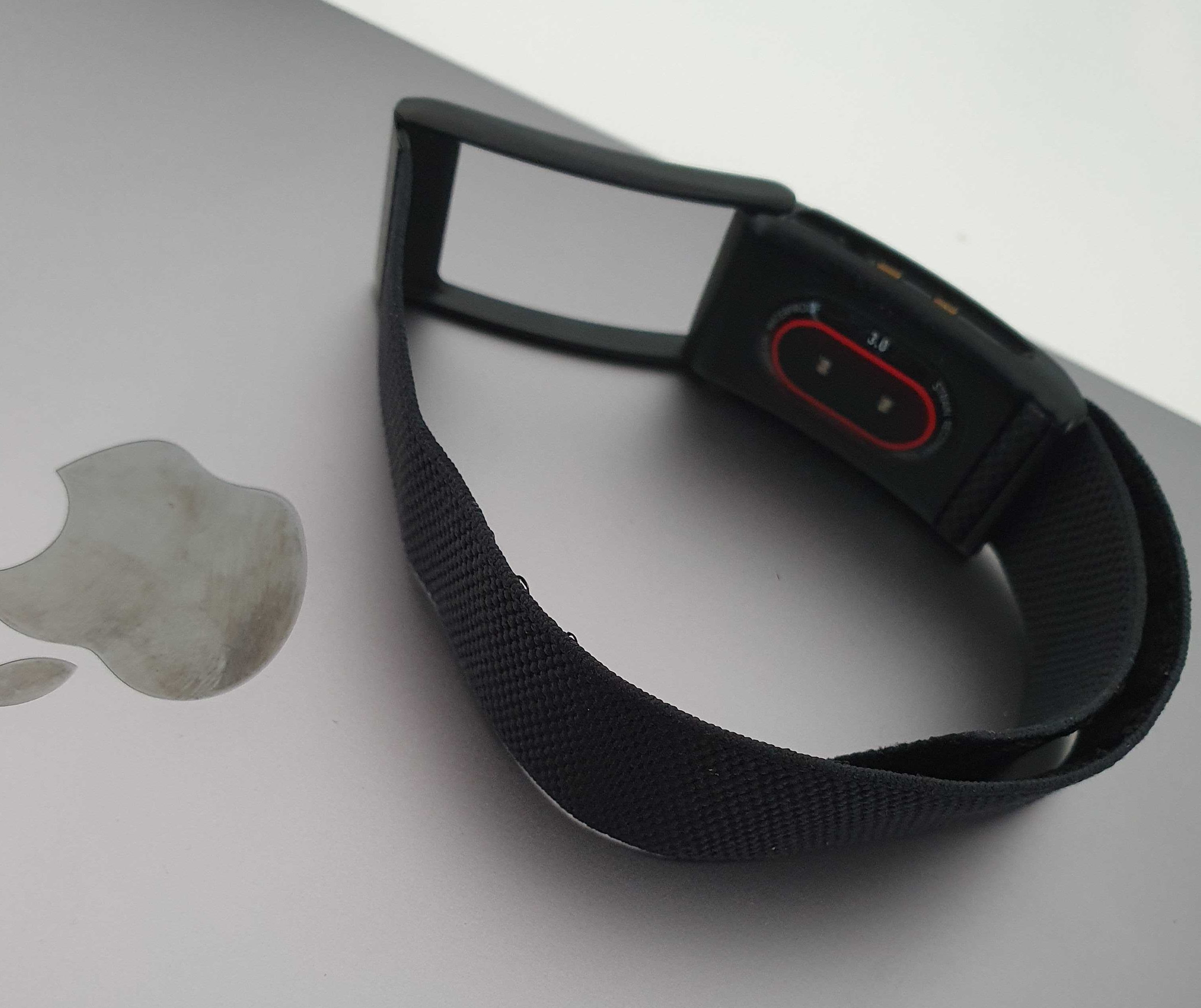
But for that data to be useful it has to be accurate, otherwise the insights into your physiology and recovery will be useless. I’ve always been a bit suspicious of how accurate wrist-based heart rate monitors are. My preferred choice, chest strap heart rate monitors, have been the gold standard of laboratory accuracy for over a decade, whereas the accuracy of wrist-based systems can vary widely.
I did some validation testing myself to see how the Whoop band compares to a Garmin chest-strap. I wore the Whoop on my wrist and paired it with Zwift, I also wore my Garmin chest strap at the same time and gathered the data from that device using my bike computer.
I did an 80-minute ride on Zwift with some threshold intervals to make sure my heart rate was going up and down throughout the ride. Post ride analysis on Strava showed that Whoop is as good as the highly-accurate Garmin chest-strap. As it turns out, the Whoop is way more accurate than I was expecting. Another point to Whoop.
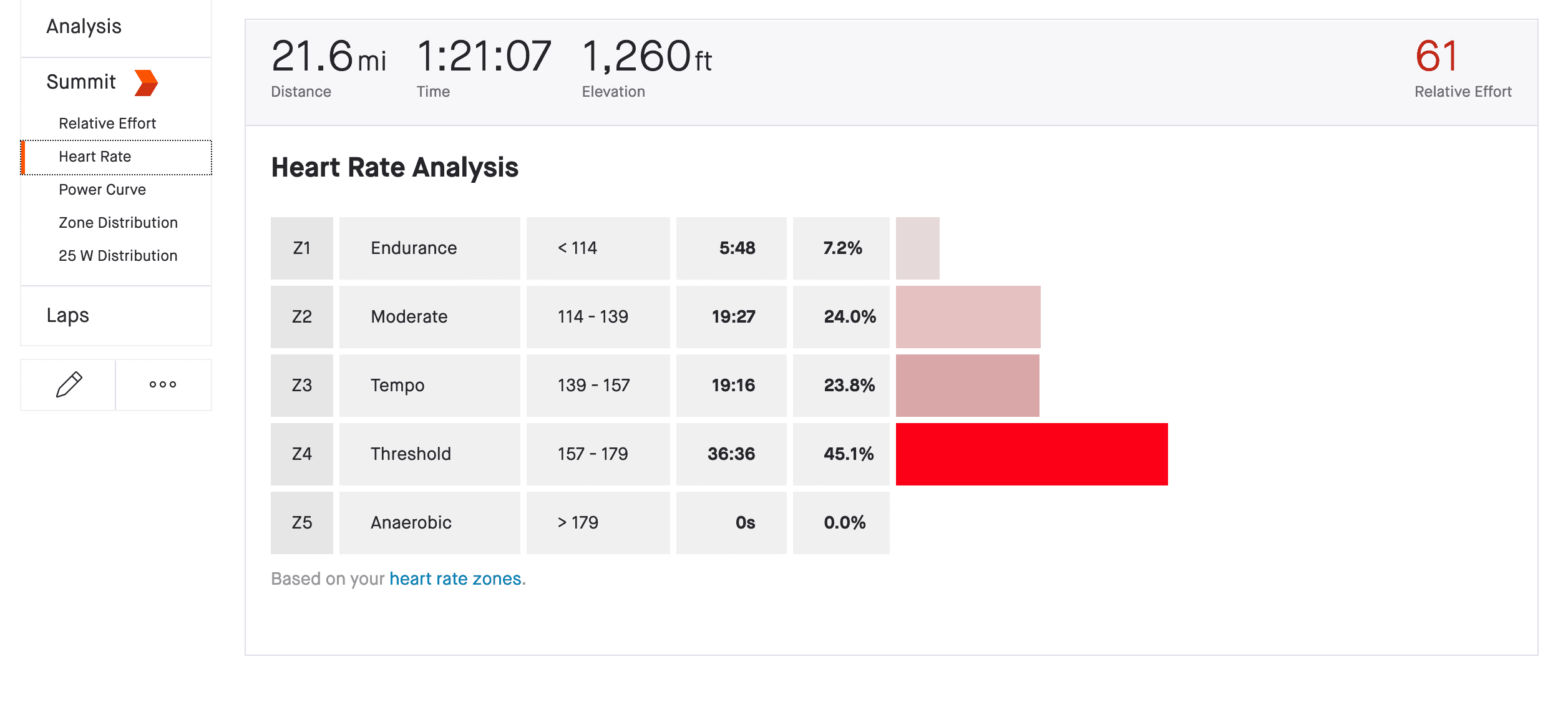
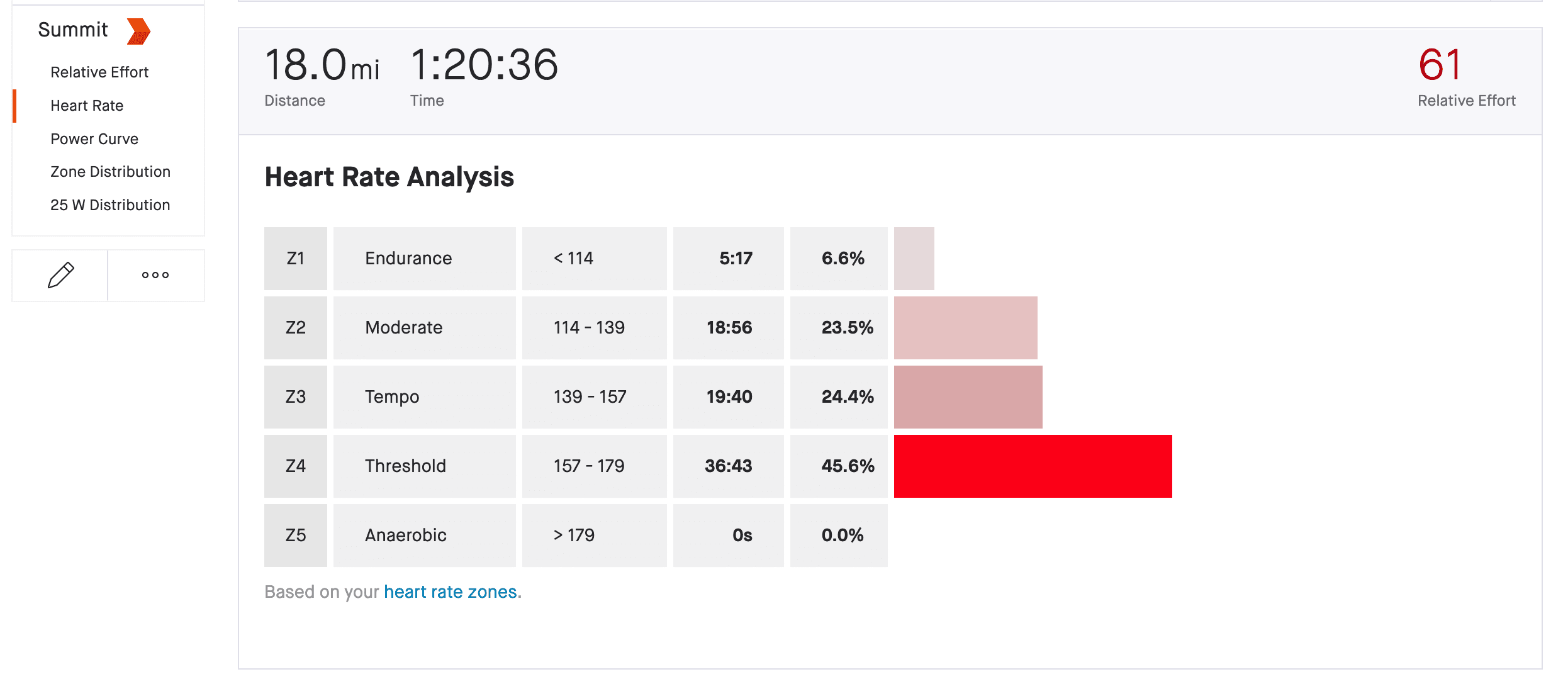
After wearing the Whoop band for every second of the day for at least a week, it starts to get a pretty good idea of your physiology and here’s where the other component of the Whoop experience comes into play, the app.
There’s no screen on the Whoop band so that means the main experience of the device is on your phone. In the Whoop app, you can keep a journal of how you’re feeling, and dissect all the data that it’s been gathering to develop an understanding of how well you’re training and, more importantly, how well you’re recovering.
The app is built around three main screens to help you understand and track different aspects of your training and rest: strain, recovery, and sleep. There’s also an overview screen where you can see a snapshot of your past week’s performance.
Each of these screens has an upper and lower section. The upper section gives a quick snapshot of that specific metric’s daily score, the lower goes into a bit more detail and shows your seven-day history. It’s very intuitive, and takes just a few minutes to figure out.
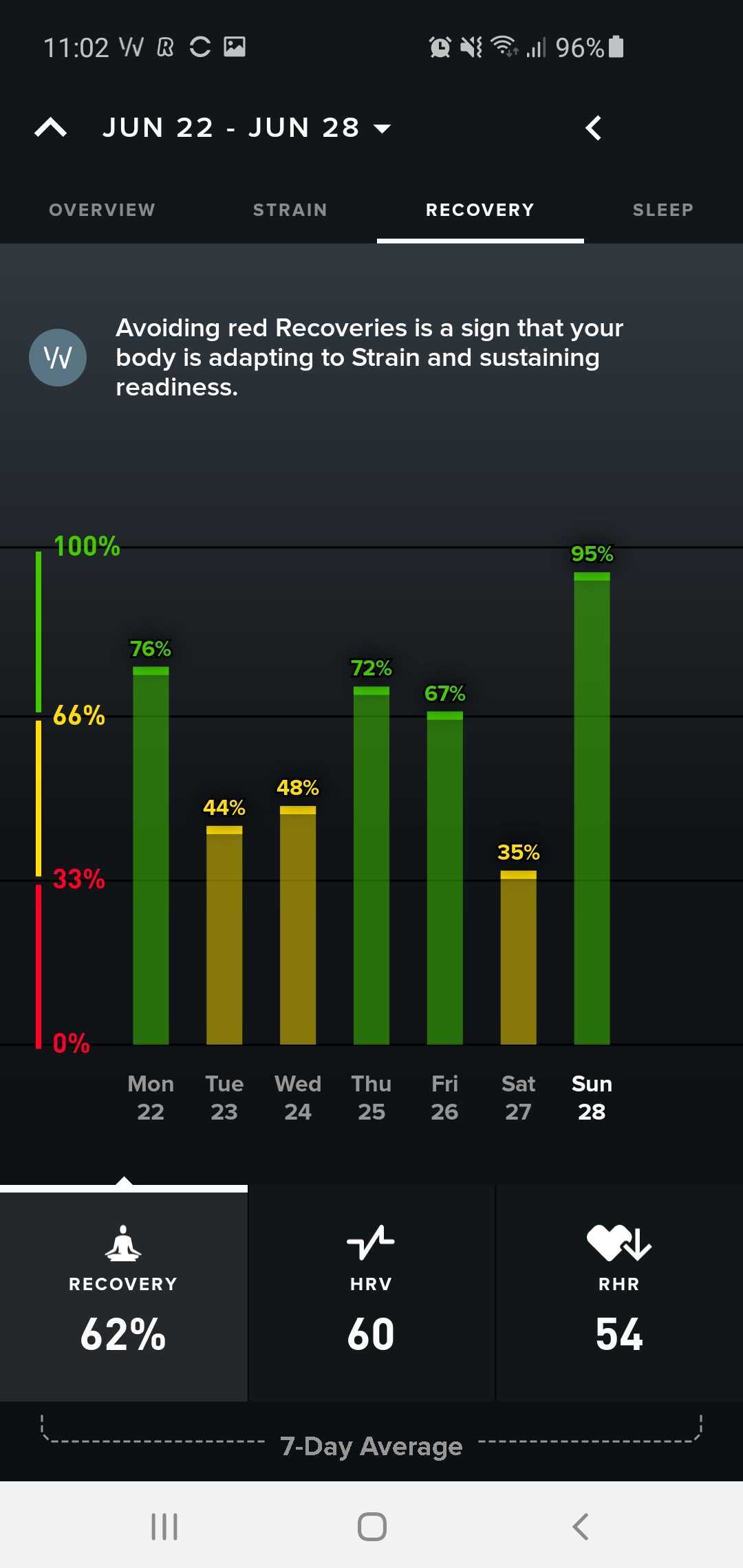
The only annoying thing is that it takes at least a week for Whoop to gather and analyze enough data about you until it starts becoming useful. But the more you wear it, the better it becomes. With time, it learns more about your body and what “normal” is for you. The more understanding that Whoop can gain of your own cardiovascular physiology, the more accurate it becomes when giving you your strain and recovery scores. After about a week, you’ll clearly see when you’re training above or below normal levels.
I found myself spending most of my time on the main overview and recovery screens, checking them every morning after the app processed my sleep for the previous night and computed my “recovery score.”
There are a few key metrics when it comes to computing your recovery score: resting heart rate, heart rate variance, sleep quality, and day strain.
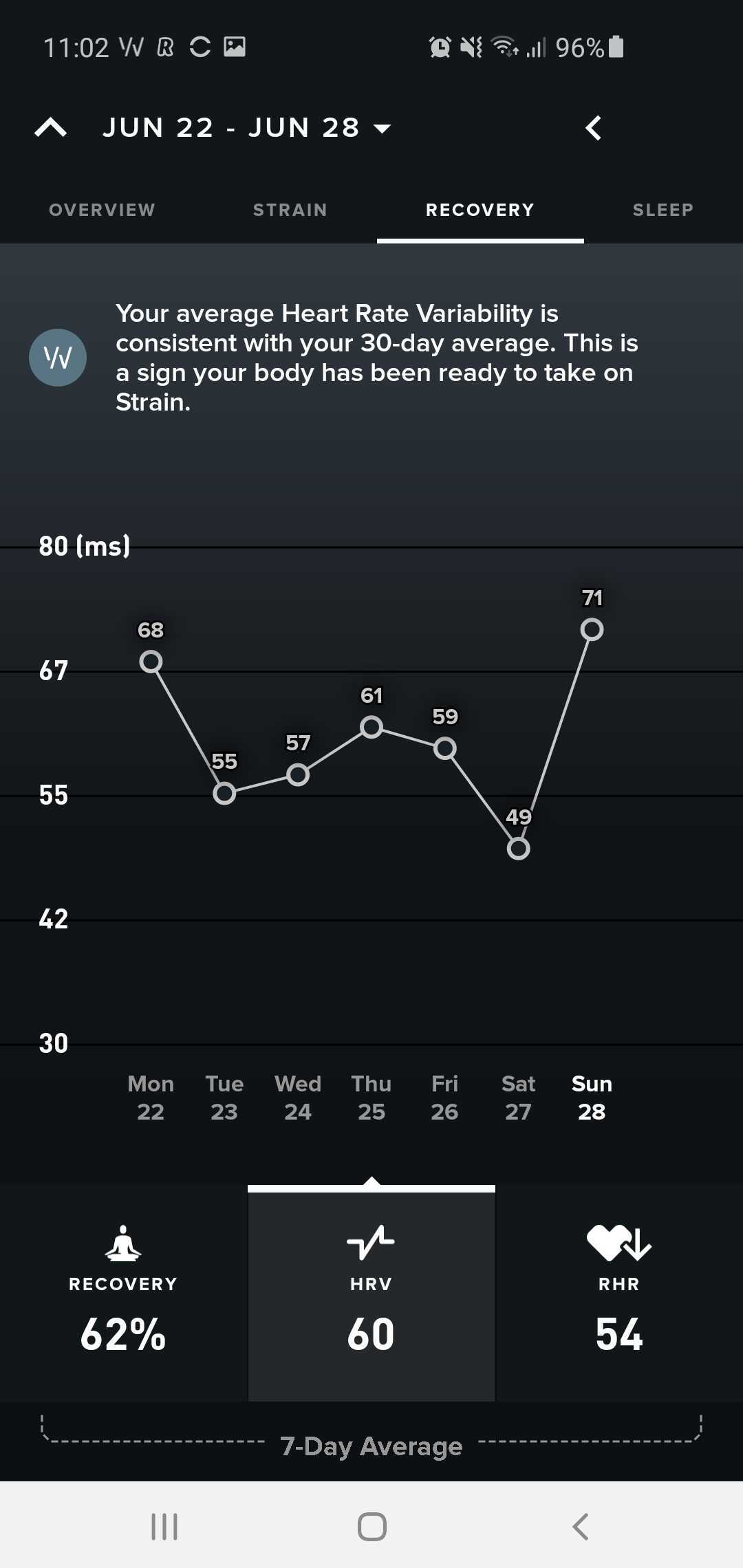
The day strain is a measure of how hard you trained, Whoop also captures activity data when it senses you’re out doing something like running, cycling, or whatever else. So when you get back, it will compute a strain score for that specific activity, you can also drill down into that activity’s data if you want.
Resting heart rate is also self-explanatory, but heart rate variance (HRV) is the one that is perhaps most interesting. Ten years ago, not much was actually known about HRV, but it’s fast becoming one of the most important fitness metrics used by professional athletes.
Time to get nerdy
As its name suggest, HRV is a measure of the tiny changes in time between individual heartbeats. HRV is controlled by the autonomic nervous system. When under a lot of physical and emotional stress, HRV drops to prepare the body for fight or flight mode, but when well rested, a person’s HRV will increase.
While lower resting heart rates are indicative of being well-trained and well-rested, the inverse is true of HRV. Resting heart rates vary from person to person, the average is around 70 beats per minute. HRV also varies from person to person, more so than RHR in fact.
While high HRVs are indicative of fitness, that rule only applies on an individual level. A person who has a HRV of 140 isn’t necessarily twice as fit as someone with a HRV of 70. However, if a person who has a HRV of 70 when well-rested, wakes up with a HRV of 40, it’s indicative that they could do with a bit more rest or to take it easy for the day.
Interestingly, HRV and RHR aren’t always in sync. There have been many days when my resting heart rate returned to normal levels, and my recovery score was in the yellow (red is bad, green is very good, yellow is in the middle). However, my HRV was still suppressed, and Whoop’s advice is to not train too hard on that day.
Ordinarily, I would have thought: “I feel fine, and my RHR is normal, let’s go for it.” But on a deeper level, I still needed to rest and address other causes of stress.
Following Whoop’s guidance, and performing restorative exercise on these days, proved a sure fire way to get my recovery score back in the green. In other words, letting Whoop take the lead with how hard I train has helped me promote recovery, and make more gains to fitness than I would have otherwise. It’s like having a coach in your pocket.
All about dem gainz
While most fitness bands are focussed on keeping you active, it should be clear by now that Whoop is the opposite. It’s not going to tell you to stop working out, but rather, it helps you understand how much emphasis you should be placing on recovery after exercise. If you train hard, you should rest hard too — that’s when the gains are made.
You won’t find any arbitrary step-counters on the WHOOP band or its associated app. Instead, its main features and interface is focussed on helping you understand your body’s response to varying cardiovascular loads and recovery strategies so that you can learn how to recover better.
For average folk like myself, it will help make what little training and recovery we do more effective; for pro athletes, it can help prevent over-training.
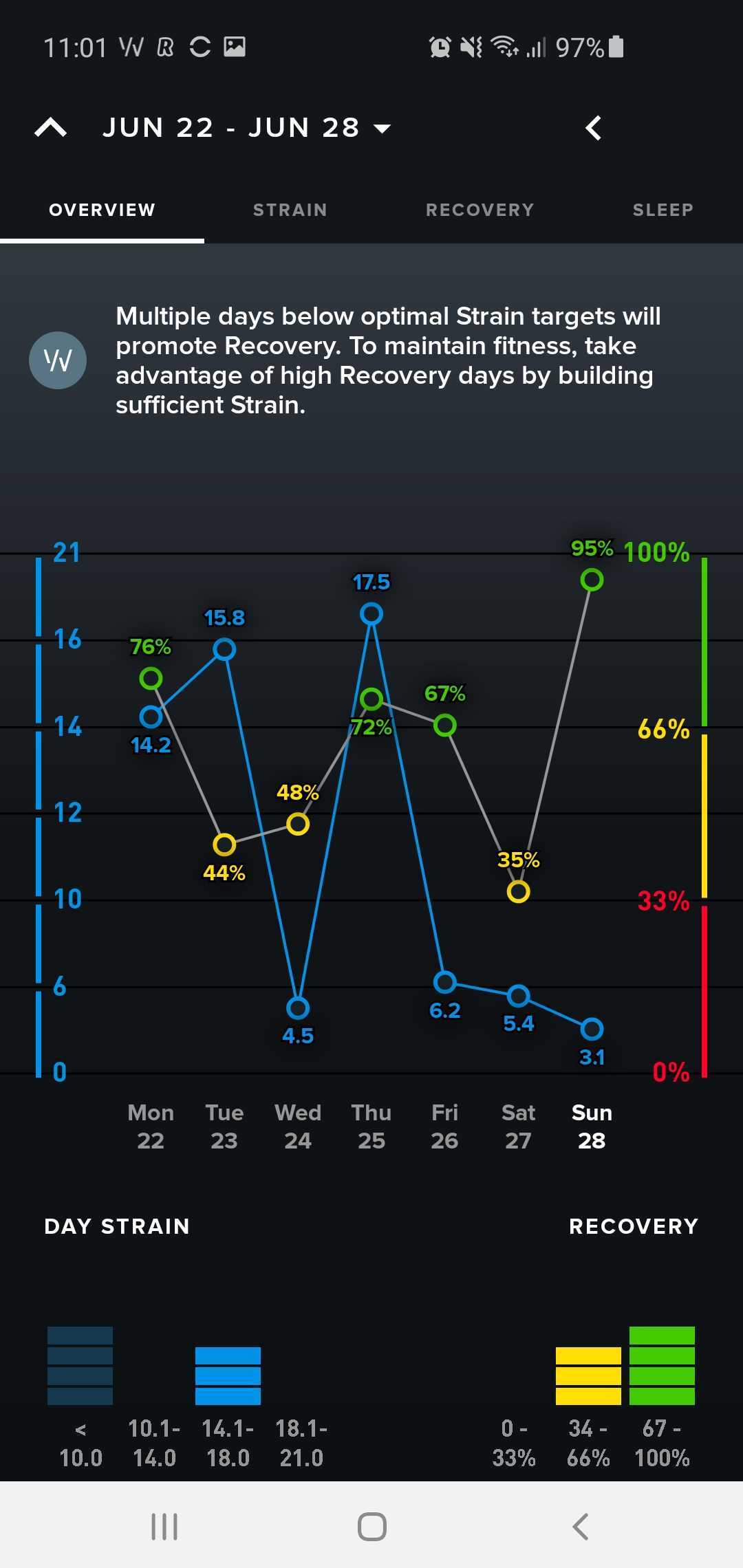
Knowing on an objective level how well rested you are can help you identify days when you should train hard, and days when you should focus on active recovery and restorative exercise. That’s the basic principle.
I, like many other cyclists, am guilty of riding lots of “junk miles,” where I gamble about at a decent intensity with no real focus. For seasoned cyclists, doing this does little more than build up a substantial amount of fatigue. Fitness plateaus because training isn’t at a high or varied enough intensity, and perhaps more importantly, all that time riding prevents adequate recovery.
The real benefit of Whoop for me was learning how to personalize and polarize training. In other words, using Whoop I now know with some accuracy when I should make hard training days hard, and easy days easy. It’s made me see that going “on feel” for me is about 80% accurate, and that my training generally does lack focus.
Over the two months using the Whoop band, I’ve increased my functional power on the bike by about 6%. That might not sound like much, but some riders can struggle to make performance gains like that over the course of an entire season. I’ve also taken a bunch of Strava KOMs of that period too.
(Speaking of Strava, just last night, Whoop announced that it now integrates with the fitness tracking platform, so you can upload activity data directly to the fitness social network.)
I haven’t made dramatic changes to what I’m doing when I’m training, either. Instead, Whoop is making me disciplined to go easy on days when I need rest, and to push harder in confidence on days when I’m well rested.
Whoop places a big emphasis on sleep because that’s where most recovery is done. It bundles this into what it calls its “sleep coach”. The sleep coach learns how much sleep you need to “get by, perform, or peak” and then tells you when to go to bed so you wake up the right amount of rested.
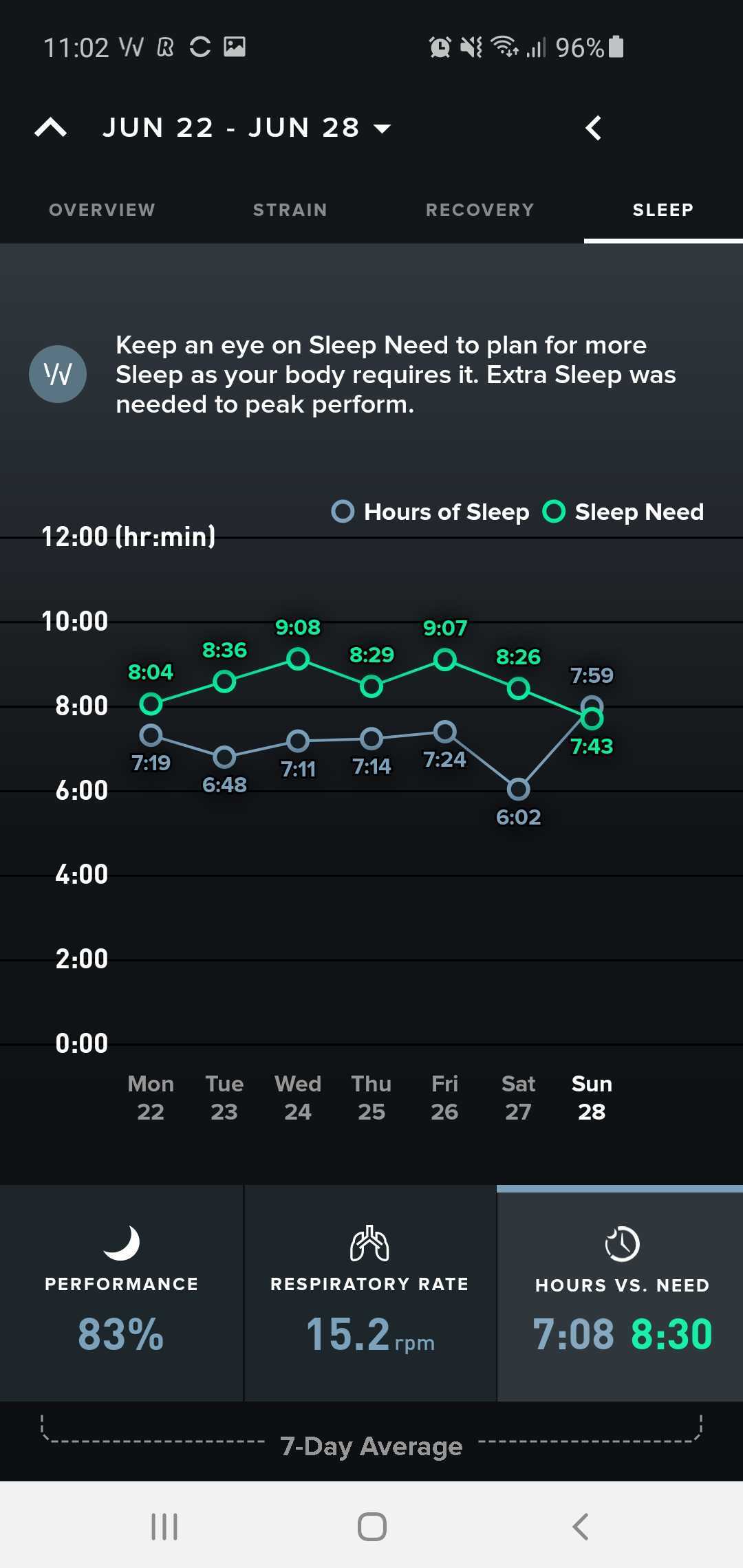
The folks at Whoop told me the most common piece of feedback after the first month or two of using the band is how much more sleep users get — and I can testify to that. I’m getting way more sleep, and clearly the benefits are showing. Just do what it recommends, and you won’t go too far wrong if you’re wearing it all the time.
But there is a fly in the ointment: the price.
Whoop is taking an unconventional approach with its pricing strategy. Users don’t buy the band or app outright, but instead, subscribe to Whoop like a gym membership. Or like Strava is now asking you to do.
There are three membership options available at the moment, with varying levels of commitment and upfront cost. The shortest commitment is for six months and works out to €25 per month, after which you can cancel or carry on with the standard monthly fee of €25 per month.
If you’re willing to part with a bit more cash upfront you can commit to an 18-month membership which effectively costs €16 per month, or €288 upfront. Then €25 per month afterwards.
This seems expensive, to me. Especially given that without the membership the device is useless. It can be gifted to someone else, and they can start a membership, though.
The Whoop band itself isn’t too advanced, there’s no screen or GPS, and its sensors aren’t exactly bleeding edge. And users don’t actually pay for it, it’s all covered as part of the membership. So that takes the edge off, a little.
Strava recently pivoted to a subscription model and all hell broke loose — users really didn’t like being asked to pay $5 per month for a fully featured service that used to be mostly free. The free version is still well-equipped, though. But there is no free or entry level option with Whoop.
Whoop is a new company, and I think it’s always better to lower prices over the course of time, rather than raise them and introduce fees for historically free services. So this might be a good move to start off with, but I would like to see Whoop segment its product for different budgets.
Perhaps it could offer different feature levels for different monthly fees. Or perhaps it could sell the hardware for an upfront cost, and reduce the monthlies a little. I think there’s a world of opportunity for Whoop, and it should explore its pricing strategy continually.
Hopefully as the company develops and more people buy into it, its prices will come down and value will go up. As I mentioned, Whoop has just added Strava integration which adds a boon if you also use that platform.
All in all, my experience with Whoop has been great and has become part of my daily routine. It’s got me sleeping more, respecting recovery as I should have been, and my performance and overall well-being has improved. It’s helped me figure out how to wake up every morning feeling as refreshed as possible — it’s hard to put a price on it when I put it this way.
Get the TNW newsletter
Get the most important tech news in your inbox each week.


